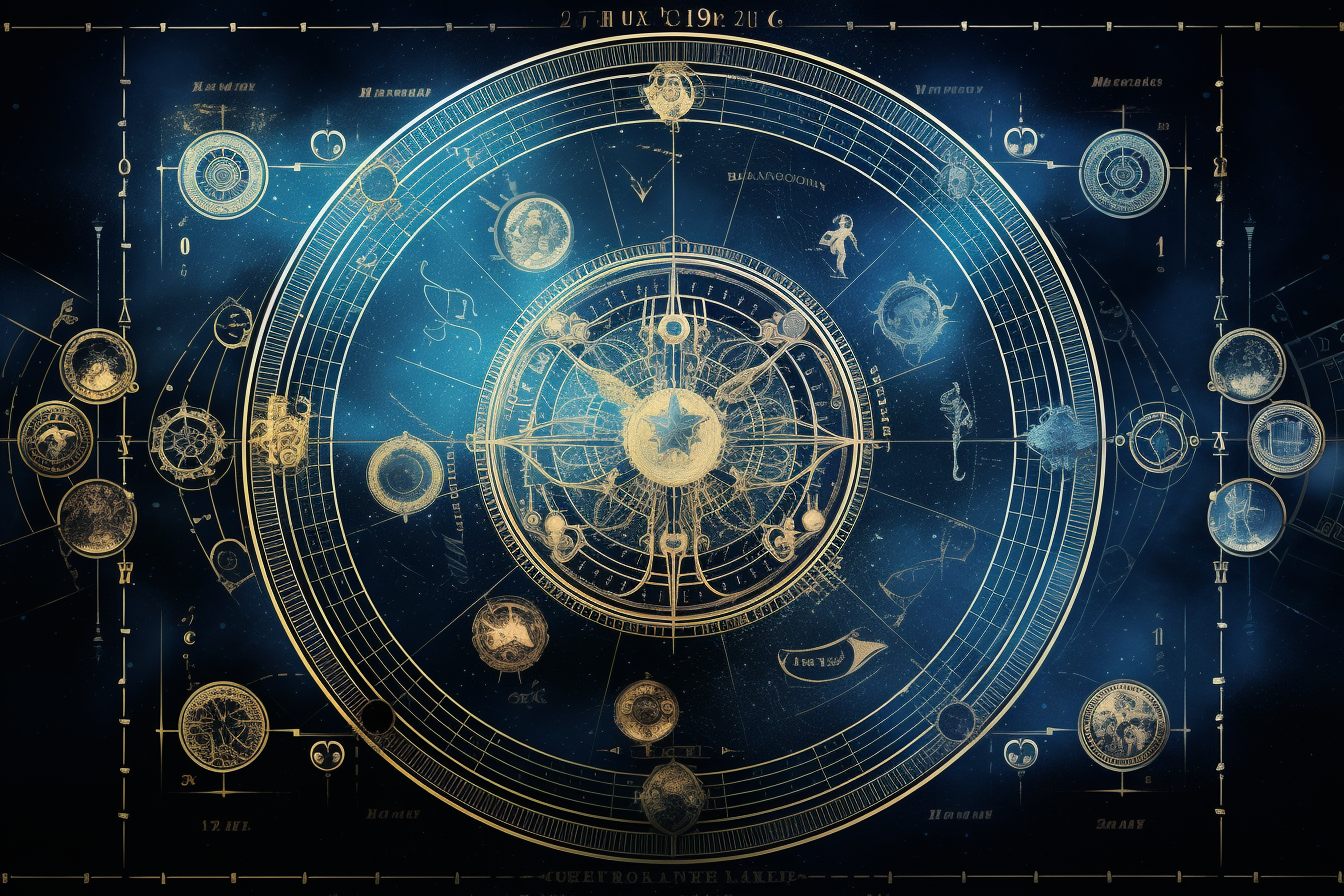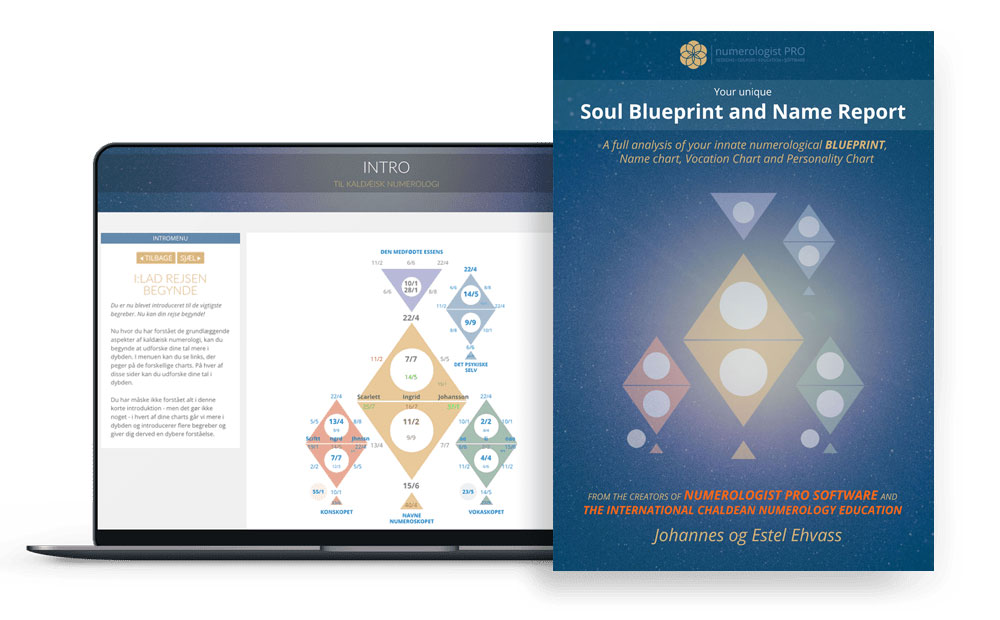Introduction to Astrological Houses

Johannes Ehvass
Welcome, dear reader! In this series, we explore the twelve houses of astrology, each representing a distinct aspect of our lives. These houses form the core of an astrological chart, guiding us through the varied realms of personal identity, relationships, career, and more. As we delve into each house, we'll discover how they shape our perspectives and intersect with planetary energies. Whether you're well-versed in astrology or newly curious, join me on a journey through these celestial domains, where cosmic patterns illuminate the intricacies of human experience.
Introduction to Astrological Houses
The Essence of Houses in Astrology

The astrological chart, often referred to as the natal or birth chart, is a celestial snapshot capturing the position of the planets at the precise moment of one’s birth.
While the zodiac signs detail how planets act (their qualities and characteristics), the astrological houses depict where in one’s life these energies manifest. Essentially, if the zodiac signs are the “actors,” the houses are the “stages” upon which they perform.
Brief History of the Development of the House System
Astrology has ancient roots, with civilizations like the Babylonians, Egyptians, and Greeks contributing foundational concepts that shaped the practice. The concept of astrological houses isn’t as ancient as zodiac signs or planets but has been crucial in horoscopic astrology, especially when personal fate and life circumstances are the focus.
The system of houses began to crystallize during the Hellenistic period, roughly between the 3rd century BCE and the 7th century CE. Pioneering astrologers of this era, like Claudius Ptolemy, started to give more structure to the astrological chart, setting the groundwork for the house systems we’re familiar with today.
Significance of Houses in a Birth Chart
Each astrological house represents a distinct area of life. From one’s self-image and personal resources to relationships, career, and even hidden enemies, the houses encompass a broad spectrum of life’s experiences.
Angular Houses (1st, 4th, 7th, 10th): These houses are foundational, corresponding to pivotal life areas such as self (1st), home and family (4th), partnerships (7th), and career (10th). They’re called “angular” because they coincide with the four angles of the chart.
Succedent Houses (2nd, 5th, 8th, 11th): These follow the angular houses and are linked with resources and values, both material and immaterial. Here, we find houses related to personal finances (2nd), creativity and offspring (5th), shared resources (8th), and aspirations and group affiliations (11th).
Cadent Houses (3rd, 6th, 9th, 12th): These houses pertain to transitions and adaptability. They encompass themes like communication and learning (3rd), daily routines and health (6th), higher wisdom and journeys (9th), and the subconscious mind and spiritual realization (12th).
A birth chart’s houses are influenced by the zodiac signs that rule over them and the planets that occupy them. A house with several planets (a stellium) emphasizes that life area’s importance, whereas empty houses (those without planets) don’t necessarily indicate neglect but might suggest a more straightforward experience in that domain.
Different House Systems
As astrology evolved, various house systems emerged, each with its methodology for dividing the sky. Some of the most widely used include:
Placidus: Based on both birth time and location, this is the most popular system in Western astrology. It divides the ecliptic into twelve unequal segments.
Whole Sign: One of the oldest systems, each house corresponds entirely to a zodiac sign, making them all equal in size.
Equal House: The ascendant’s degree marks the start of the first house, and each subsequent house is exactly 30°.
Koch: Similar to Placidus but uses a different method to determine intermediate house cusps.
Regiomontanus: Employed primarily for horary astrology, this system’s roots are in the Hellenistic tradition.
Campanus: The celestial equator is divided into twelve segments, casting these divisions onto the ecliptic.
While each system has its merits and adherents, the choice often boils down to personal preference, the specific branch of astrology being practiced, and the birth data’s accuracy. Nevertheless, regardless of the system used, the essential nature of the houses remains consistent. Their themes and associations are steadfast across these methods.
The Interplay Between Planets, Signs, and Houses
To truly grasp the intricacy of astrological houses, it’s essential to understand their interaction with planets and zodiac signs. While planets represent the “what” (the energy or drive), signs demonstrate the “how” (the style or manner of expression), and houses show the “where” (the life area).
For instance, Venus in Leo in the 5th house could be interpreted as someone who expresses their love (Venus) in a flamboyant, theatrical, or even dominant manner (Leo) especially in areas related to creativity, romance, and children (5th house).
House Cusps and Rulerships
The beginning boundary of a house is termed its cusp. Each house cusp in a birth chart has a corresponding zodiac sign, which becomes the “natural ruler” of that house. For deeper insight into a specific house’s themes in one’s chart, it’s beneficial to study not only the sign on the cusp but also the location of that sign’s ruling planet.
For example, if someone has Scorpio on the cusp of their 10th house of career, we would look at Mars (traditional ruler) and Pluto (modern ruler) to gain more clarity about their professional life, potential challenges, and successes.
Angular, Succedent, and Cadent Houses Revisited
Diving deeper into the house triad:
Angular Houses: Representing our core foundations, angular houses deal with our immediate surroundings. They often correspond with significant life events or major themes. The energies of planets placed here are direct and manifest prominently in one’s life.
Succedent Houses: Focusing on personal resources and how we maintain stability, planets here suggest how we react to the initial impulses of the angular houses and build upon them.
Cadent Houses: These houses concern adaptability, learning, and communication. They’re often more introspective, representing mental processes and how we adjust to changing circumstances. Planets here may suggest areas where one is thoughtful, adaptive, or even restless.
Importance of the First and Tenth Houses
Two of the most vital houses in a birth chart are the 1st house, the House of Self, and the 10th house, the House of Career and Public Life.
The 1st House or Ascendant: This house corresponds with our initial impression on others, our natural reactions, and general outlook on life. It plays a pivotal role in understanding one’s personality and physical appearance. The sign on the 1st house cusp, known as the rising sign or ascendant, is equally as significant as the Sun and Moon sign in many astrological interpretations.
The 10th House or Midheaven (MC): This house offers insight into one’s career, reputation, and public image. It showcases how we’re recognized in our professional life and the broader public domain. The sign on the MC can give hints about one’s vocation or public persona.
Conclusion
The houses in astrology provide a framework, mapping out the vast terrains of human experience. They offer valuable insights into diverse life areas, from our deepest inner thoughts to our public persona. By understanding the nuances of the astrological houses, one can gain profound insights into the rhythm of their life, discerning both challenges and opportunities that lie ahead.
Unearthing the Depths of Individual Houses
Delving deeper into individual houses can unveil subtle layers of one’s psyche and life patterns. For instance, while the 2nd house typically denotes financial assets, it also touches upon self-worth and values. Similarly, the 8th house, though primarily associated with shared resources and legacies, delves into the mysteries of life, death, and rebirth, offering insights into our deepest fears and transformations.
The Houses and Life’s Cyclical Nature
Life is a series of cycles, with beginnings, middles, and endings. The astrological houses reflect this cyclical nature. The first few houses (1st to 3rd) pertain to self-awareness and personal identity. The subsequent ones (4th to 6th) revolve around our immediate environment, encompassing family, health, and day-to-day routines. The next set (7th to 9th) relates to our connection with the broader world, covering relationships, shared experiences, and philosophical beliefs. Finally, the last group (10th to 12th) touches upon our societal roles, aspirations, and connection to the universe’s deeper mysteries.
Transits and Progressions Through the Houses
One of the dynamic aspects of astrology is how the ever-moving planets (transits) influence our birth chart. As planets transit different houses, they activate and highlight those areas of life. For instance, when Jupiter, the planet of expansion and luck, transits one’s 7th house of partnerships, it might indicate a time of beneficial collaborations or even romantic opportunities.
Progressions, another predictive tool, move planets and angles of the birth chart based on symbolic day-for-a-year calculations. These also interact with the houses, indicating evolving internal dynamics and focal points in one’s personal development journey.
House Interceptions and Duplicated Signs
In some birth charts, due to the house system or one’s birth latitude, a zodiac sign might rule over two house cusps (duplicated signs) or not appear on a cusp at all (intercepted signs). Intercepted signs represent energies that might be harder to express or access initially but can be unlocked over time. Duplicated signs, on the other hand, indicate areas of life where the energies of that sign manifest more prominently or with added emphasis.
Final Thoughts
The houses in astrology, much like a theatrical stage, set the backdrop against which the planets (actors) enact their roles. They ground the cosmic energies into tangible life areas, making the abstract concrete. By delving into the houses and understanding their intricate dynamics, one can obtain a holistic view of their life’s tapestry, appreciating both the challenges and gifts the universe bestows.
Whether you’re new to astrology or a seasoned practitioner, the houses offer endless avenues for exploration, reflection, and growth. They stand as testament to astrology’s enduring relevance, weaving the personal and cosmic into a narrative of self-awareness and destiny.

Johannes & Estel: Renowned authorities in Numerology, Astrology, and the esoteric arts. As the founders of Scandinavia's premier Numerology school, we're delighted to share our insights through this curated series on astrology. Dive in and discover the stars.
The Worlds Most Advanced Numerology Report

Your birthdate reveals your unique life purpose, potentials, talents, weaknesses, and karma in this life.
Your names show what you attract into your life regarding your career, relationships, happiness, money, and success.
GET THE REPORT HERE
Introduction to Astrology
The history of Astrology
Moving beyond deterministic astrology
Foundation of Astrology: Planets, Signs and Houses
Astrology and the Holographic Universe
The Holographic Universe
The Human Psyche as a Mirror to The Solar System
The Human Body as a Mirror to The Star Signs
Astrology Background
Egyptian Astrology
Mayan Astrology
Chinese Astrology
Indian Astrology - Jyotish
Celtic Astrology
Tibetan Astrology
Mesopotamian Astrology
Early Mesopotamian Astrology: The Dawn of Celestial Divination
Enuma Anu Enlil: The Epicenter of Babylonian Celestial Omen Interpretation
Babylonian and Chaldean Astrology
Babylonian and Chaldean Astrology
Chaldean influence and evolution
Chaldean Wisdom: Safeguarding and Transmitting Astrological Knowledge
Hellenistic Astrology
Hellenistic Astrology background
Claudius Ptolemy and Tetrabiblos
Vettius Valens
Dorotheus of Sidon
Persian Astrology
Persian Astrology background
Sassanian Astrology
Late Antiquity and The Transition Period
Late Antiquity and The Transition Period
Hellenistic to Islamic Transition: The Torchbearers of Astrological Wisdom
Islamic Golden Age
Arabian Astrology Background
Arabian Astrology Contributions
Medieval Astrology
Introduction: The Medieval Cosmos
Monastic Preservers: Astrological Knowledge in the Dark Ages
Astrology in Medieval Medicine
Kings, Queens, and Constellations: Astrology in the Medieval Court
The Church and the Stars: A Contentious Relationship
Universities and Scholastic Pursuits: Academic Astrology
Astronomy & Astrology: Tools of the Trade
Medieval Astrological Houses and the Synthesis of Traditions
Transition to the Renaissance: Humanism and the Celestial Arts
Reflections: Medieval Astrology's Echoes in Modern Practice
Astrological Art of the Middle Ages
Famous Medieval Astrologers
Medieval Astrological Texts
Renaissance Astrology
Renaissance Humanism and Astrology
Scientific Advancements and Astrology
The Social Fabric: Astrology in Everyday Renaissance Life
Court Astrologers of the Renaissance
Controversies and Conflicts: Astrology Under Scrutiny
Renaissance Texts and Authors: Continuation of a Tradition
Astrology and Art: Celestial Imagery in the Renaissance
Renaissance Astrological Practices: Evolutions and Innovations
End of the Renaissance: The Gradual Decline of Astrological Influence
Renaissance Astrology's Echo in the Modern World
Enlightenment Astrology
Introduction: The Enlightenment and Astrology
Challenging the Stars: Astrology's Critics during the Enlightenment
Astrology and the New World
Astrology in the 19th Century
The Dawn of Psychological Astrology
Astrology in the 20th Century: A Modern Renaissance
Astrological Associations and Schools
Modern Controversies and Astrology
Astrology and Popular Culture
Astrology and Technology
Current Trends and Future Directions in Astrology
Conclusion: Reflecting on Astrology's Evolution
The Planet Significances
The Sun in Astrology
The Moon in Astrology
Mercury in Astrology
Venus in Astrology
Mars in Astrology
Jupiter in Astrology
Saturn in Astrology
Uranus in Astrology
Neptune in Astrology
Pluto in Astrology
Chiron in Astrology
Black Moon Lilith in Astrology
Pars Fortuna in Astrology
Ceres in Astrology
Houses in Astrology
Introduction to Astrological Houses
The Angular Houses
The Succedent Houses
The Cadent Houses
The 1st House
The 2nd House
The 3rd House
The 4th House
The 5th House
The 6th House
The 7th House
The 8th House
The 9th House
The 10th House
The 11th House
The 12th House
Interaction Between Houses
Derived Houses, House Rulers, and Interceptions
Conclusion: Synthesizing House Knowledge
All Materials © 2023 & 2024 Numerologist PRO
Terms of Service: Information provided by Numerologist PRO and/or from this web site is not intended as advice (medical, psychological, financial or other), nor is it intended to replace your work with a qualified professional (medical or otherwise). You should maintain your relationship with your providers and consider the services of this site as informational only. Any information, stories, examples, or testimonials presented on this website do not constitute a warranty, guarantee, or prediction regarding the outcome of an individual. This web site is a sharing of knowledge and information of numerology/energy work based on the experiences of Numerologist PRO. You are encouraged to make your own decisions based on your own research and inner guidance. By booking and receiving services, you agree to fully release and hold harmless Numerologist PRO and all it's affiliated numerologists from and against any liability or claim that may arise out of or in connection with their service(s).
Numerologist PRO © 2021

CONTACT
numerologist@numerologistpro.com
LIKE US, and get free numerology tools, info about your personal numbers, best business dates of the year - and more!
YOUR FREE NUMEROSCOPE CHART
Enter your name and email below and get access to our free online numerology chart tool.